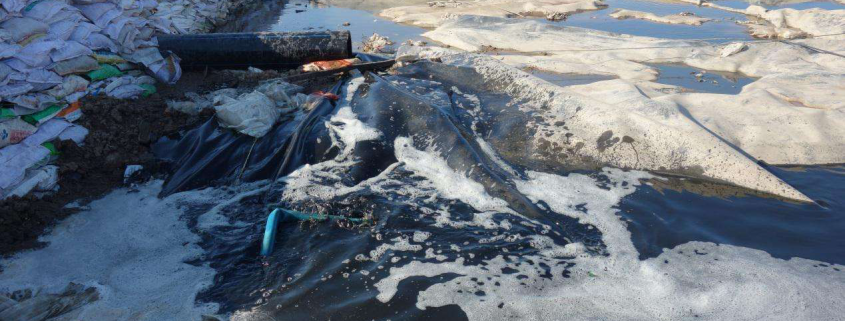There are a lot of kitchen waste, high moisture content and low calorific value in China’s urban domestic waste. During incineration, fresh waste must be stored in the waste storage pit for 3-5 days for fermentation and ripening, so as to achieve the purpose of draining water and increasing calorific value, so as to ensure the normal operation of the subsequent incinerators. According to the pollution control standard for domestic waste incineration (gbi8485-200, the water drained in this process is called as “Leachate” is characterized by high concentration of pollutants, great change in water quality, strong odor, yellow brown or gray brown. Leachate is the last link of garbage treatment. Many factors lead to the fact that leachate treatment has not been concerned by the public, the media and the whole society, and has become a forgotten corner.
The COD of landfill leachate is several times or even dozens of times higher than that of landfill leachate, and the amount of landfill leachate accounts for the vast majority of the process wastewater in the waste incineration plant. Compared with the discharge standard data, it is found that the pollutant discharge concentration in the landfill leachate discharge standard is higher than that in the waste incineration plant, so the difficulty of leachate treatment in the waste incineration plant will be much higher than that in the landfill leachate treatment. As a special industry, the leachate in the garbage chushao plant is a kind of sewage with high concentration, complex composition and difficult degradation, and its treatment difficulty is more difficult than that of other industries. According to the purpose of relaxing the discharge standard of special industries such as sugar making, chemical industry and monosodium glutamate stipulated in the integrated wastewater discharge standard, whether the discharge standard of the garbage incineration plant should be properly relaxed is worth while. Otherwise, the treatment difficulty and cost will be too high for many incineration plants to bear.
At present, the treatment of landfill leachate is a research hotspot and a difficulty in the field of environmental protection in China. Landfill leachate is a kind of sewage with high pollution and strong odor. When the landfill incineration plant is put into operation without solving the problem of leachate treatment, it will produce new secondary pollution. In the absence of economic and reliable technology at present, part of the garbage incineration plants that have been put into operation use to transport the leachate to the urban sewage treatment plant for mixed treatment with domestic sewage, not to mention the high cost. It needs 80-100 yuan less), which is also an illegal activity of pollutant transfer, the same as the behavior of secretly discharging sewage to the urban sewage pipe network. However, some plants use the method of private drainage to directly discharge the leachate into the surface water such as the ocean and rivers, which seriously pollutes the environment. Some manufacturers use the process with high operating cost, which only runs when the environmental protection department checks, and directly discharges these practices in the rest of the time, which will seriously pollute the environment. It is suggested that when the environmental protection department approves and accepts the leachate treatment of the waste incineration plant, corresponding clauses should be added to strictly prohibit the leachate from being transported to the urban sewage treatment plant, and refer to the automatic online monitoring of flue gas requirements in the waste incineration plant. Cod automatic on-line monitoring system is added at the drainage outlet of the system.



